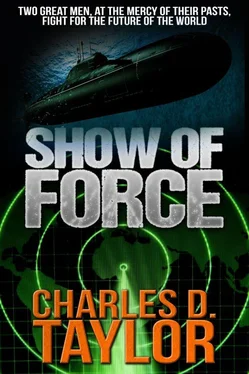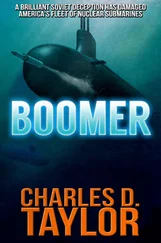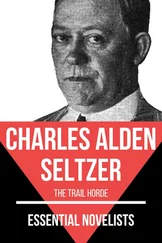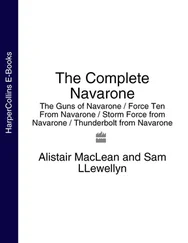that little fuel was expended before locating their target. Mendel Rivers her fish launched, turned and was already diving at the sound of the splashes, but she could not escape the torpedoes closing-in on her. The first one exploded against the sail, causing enough damage to disable and eventually sink her. But the rest of the hull was intact enough so that death would have been prolonged. The second explosion, forward of the sail, ruptured the pressure hull, mercifully making Rivers's final dive a rapid one.
The attack by the American submarines was quite different from that planned by Admiral Kupinsky, but the purposes were similar, to pick off as many of the forward element as possible and soften the opposition's protection of the carrier. The Soviets did not have the missiles that could be fired from underwater at as great a range as the Americans had. They did not take the chance of firing from the surface because the reconnaissance planes from Nimitz would have spotted them. In addition, as with the American attack, the element of surprise was crucial, especially since they would be firing from a much closer range.
Admiral Gorenko had learned a great deal from the Army during the Great Patriotic War, and one of the lessons he learned was sheer power in numbers. He built submarines as often as his budgets would allow, for he had learned that submarines were expendable and you could never have too many. There were an even dozen that attacked that morning, waiting on either side of the approaching ships, much like the American attack. One of them silently hovered at maximum depth, waiting to surface in the midst of a group of ships it hoped would be vulnerable to an interior attack. They also hoped they might be able to surprise Nimitz. Truxton was the first ship to sense something ahead. The night orders from Admiral Charles warned against the possibility of a submarine attack, simply because he had planned one himself. So Truxton's CO had left his own night orders for sonar to switch to the passive mode every five minutes, just to listen. With the variations of water conditions and sensitivity of the new sonars, it was a wise idea, boring but wise. The first indication of something other than schools of fish off her port bow came just before 0700. The sonarman on the phones reported unidentified engine noises to the bridge.
The captain was in the wardroom, having joined his officers for breakfast, when the call came from the bridge. The OOD was ordered to signal the flagship and to sound general quarters. If the captain had been in sonar as he raced up the ladder outside the wardroom, he would have heard the telltale sound of the missile leaving its torpedo tube. Perhaps, if he had been at the top of the forward lattice mast with a pair of binoculars, he might have seen the missile engine ignite after breaking the surface. As he passed CIC, where the radar strobe was making its incessant sweep, he might have seen the approaching missile painted on the scope for the first time. By the time he arrived at the bridge, a worried OOD had already received reports from sonar and CIC and was reporting the attack on the primary tactical circuit. It was not really necessary, since CIC had already ensured that the information on the missile they were tracking was being fed into the master computer on Nimitz. The task force was warned.
Truxton was not properly equipped for antimissile defense. She depended on the other ships. But this time she was alone, for a single submarine had picked her out, rather than a flight of aircraft that she could defend. Her captain turned her in the direction of the missile to present as small a target as possible. The fire-control radar did manage to lock on and her five-inch gun did fire some token shells at the intruder. But that type of defense was like throwing stones at a tank. The detonation was well behind the forward gun mount, and just under the bridge. The ship nearest to her decided that it must have hit her torpedoes. It seemed the only answer, for the explosion was so powerful that they could not tell the missile detonation from the secondary explosion of the torpedoes. The bow was left attached to the rest of the ship, but that was only visible at the waterline. She was well enough built so that her forward motion didn't rip the bow off. But her bridge was another matter. It had simply disappeared, the forward lattice mast crumpling over the side. Her nuclear engineering spaces were still intact, as was her missile launcher in the after part of the ship, but much of her crew had still been forward at the time of impact. Many of the officers and men had been on their way to general quarters. Few of them were now visible on the decks. Some were able to begin swimming, but the majority were dead before they hit the water. When the closest ship moved in to assist, Truxton's appearance was almost surreal. The damage was devastating, but there were almost no blood or sailors evident to show the human effects of the explosion.
O'Bannon wasn't as fortunate. The missile that pierced the helicopter flight deck, a bit forward of her deck gun, continued down into the engineering spaces before exploding. Two of her powerful gas turbine engines were disabled by the blast, and she lost steering control. Flying metal also damaged her main electrical board, and power was lost throughout the ship. Both of the men assigned to correct such a loss were killed at the same time. To an observer, there was no smoke and little apparent damage, but O'Bannon was crippled.
Turner Joy had been retained by the Admiral because of her guns. He had anticipated that her three five-inch guns might come in handy at the right time. And the Admiral had an affection for this old ship that went back more than twenty years. Howard Bivins, her gunnery officer, was a mustang, enlisted for many years before he became a commissioned officer. He had been a seaman aboard the Turner Joy the night she had been attacked in the Gulf of Tonkin. The gunnery officer at the time was Lieutenant David Charles. Bivins had later served with Lieutenant Charles on the PBR's on the Mekong. When Bivins had been encouraged to apply for OCS, it was his old exec whom he had called in the middle of the night for advice. Commander Charles had written the recommendation that sent him to Newport, and it was Admiral Charles who had sent him the first letter of congratulations when he heard Lieutenant Bivins had received orders as gunnery officer on Turner Joy. Just as fast as her newer sister ships, but much smaller, and without the sophisticated weapons systems, Turner Joy was really not worth the two torpedoes that sank her. The first exploded in her hull well below the forward mount, setting off the magazine, which in turn accounted for most of her bow. Lieutenant Bivins had just been adjusting his helmet while talking with the captain, when the wall of fire from the magazine wiped out every individual in the bridge area. Neither man knew that the ship they both loved was already lost. The second torpedo, set for an even deeper run, went off in one of her fuel tanks. Very little remained between her stacks after the ensuing explosion, and the fires could not possibly be controlled. Oldendorf moved in as quickly and as closely as was safe and lowered her boats to recover those in Turner Joy's crew who were able to escape the flames.
Nimitz had also been launching aircraft at the time of the submarine attack, and her helos were vectored toward the underwater contacts that the forward ships found all around them. One of the pilots watched fascinated as he saw missiles breaking water in two locations. Helpless, he watched their flight paths approach two of the forward ships. The first descended between the stacks of Mahan, but there was no explosion. Later that day he ferried two weapons demolition experts back to Mahan to defuse the warhead nestled in the after officer's head.
Читать дальше












